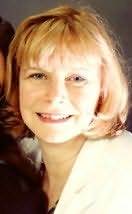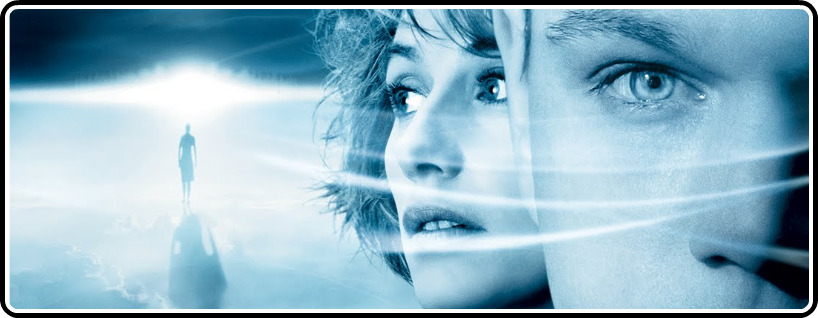Another Round of Reincarnation

The belief in reincarnation is attributed to times, cultures and regions that have long since subsided. The aura of that particular lore has waned over the concluding millennia. But, for those that remain fascinated by the concept, this segment ruminates on the topic through the insightful prose of a revered author and lecturer, the anecdotal perspective of two novelists, and by the lyrical work of a poet. Through an immersion into these literary works beginning with Reincarnation by Suzanne Weyn, proceeding with The Reincarnation of Peter Proud by Max Ehrlich, and culminating with My Religion by Helen Keller, the perplexing notion of persistence in the hereafter or vestiges of former lives is presented.
The significance of reincarnation over the past decades and centuries is that it was a contemplative discipline for defining purpose in life. The following novels and the authors show how good intentions can spread and uplift future generations while also showing the deep seated origins of past misdeed that deter us from reaching our full potential. It can serve to broaden the mind and nourish the heart. The tendency to succumb to the blindness of materialism is eclipsed by the cathartic and liberating effect of more enduring causes. Each of the forthcoming stories will emphasize, independently or collectively, the limitless sophistication of human ingenuity in tandem with the stark nature of unrealistic ideals, not to reprimand but rather to reorient more robustly. The interpretation of reincarnation as a definitive answer to many of life’s complications is a justifiable concern. Nonetheless, it is one that will be revitalized subsequently through a collage of historical and literary arrangements.
The Weyn novel hinges on two students that are visiting the Museum of Natural History as part of a high school event. Even though one of them, Jake Suarez, is new to the school he has already won first place in the archery competition. He earns a scholarship for writing a screenplay about a love story set in late 1600 Salem, Massachusetts where Brian pouts repeatedly for not finding Elizabeth May in time to consummate their relationship. In preparation for a career in dance, Samantha Tyler has worn corrective shoes to nurse a bad ankle that has affected her over the years. As the museum tour progresses, both Jake and Samantha meet again in the Hall of Emeralds after wandering away from the rest of the group. There they examine a pendant, a collar, an earring, and a gemstone that are on display. After a trifle exchange of words over the artifact exhibit, Jake and Samantha head to the theater where they wallow in a mutual attraction as the performance unfolds. Though the novel leaps from one scenario to another by time and location, the common motif is a physical or emotion attraction that is tested by circumstance.
The novel then shifts imperceptibly from contemporary New York over to a young man and a much older woman living in 1960s Mississippi, Mike and Louisa respectively. While canvassing the town to verify the voting status of his neighbors, Mike reaches the home of Louisa. After noting that he attended school in Princeton, Louisa invites Mike into her home. Louisa admits that she feels as though she has known Mike before. The feeling of déjà vu is anchored by the confession that Louisa is actually Delilah Jones who married Lenny Raymond during the war laden Paris of the 1930s. Moved by the revelation, Mike returns to Louisa’s home later that evening and they entertain a common interest in books and music as best as the age difference between them tolerates. The evening visit extends for another two weeks as the couple desperately cling to a few captivating moments. The attraction ends when Mike is killed in a car accident while on his way to post bail at the local patrol station. It was for the release of an irascible brother who is known for idiosyncratically cuddling his jaw. The story timeline is then reset to thirty years further back in France.

New York University
A reporter from Princeton, Robert Brody, enters a Paris night club to interview a performer, Delilah Jones. During the course of the interview they begin to flirt. In between questions, Delilah reveals an uneasiness to the sight of fire and her strong dancing ability despite having a bad ankle. After sharing stories of an adventure in Greece, Robert asks Delilah if she follows Buddhism whereby she retorts indifferently that it is a peculiar practice. By the time Robert finishes the interview days later, both have fallen in love even though the club manager, Lenny Raymond, has been setting his sights on Delilah since her performing debut. Robert complicates the matter by dating another club performer, Yvette. At one point, Delilah confronts Yvette and convinces her to meet at the upper terrace of the club to clarify the matter more discretely. Robert decides to investigate only to find Lenny in the company of Delilah and Yvette. Suddenly, a barrage of bullets from ground troops whiz past the terrace in their direction, striking Robert as he attempts to save Delilah from danger. It is discovered some time later that Yvette is mortally wounded while attempting to evade capture for collaborating with Delilah as spies. From this point, the time is retracted nearly 90 years yonder upon American shores.
A 15-year old African American girl has escaped slavery and is fighting against the South by disguising herself as a man answering to Lou. She is spotted by John Mays as she tends to a recent battle wound. John approaches Lou in an effort to quell the piercing stomach pain she is experiencing. As John befriends Lou, they are confronted by a Native American who intends to harm John for what appears to be an otherwise precarious altercation. Lou reaches for the rifle and kills the marauder, leaving John flailing in gratitude for the preemptive maneuver. They both part ways but reunite not too long afterward. John kindly offers Lou a drink that she promptly refuses by motioning to the wound as cause for concern. After dressing the affected area, John carries her back to a tent where she succumbs to the injury. Only then does John realize that the person lying before him is actually a female, namely Louisa Jones. The next phase of the ordeal transpires two centuries beyond in a Salem community exasperated by wretchedness.
This portion begins with Elizabeth May and Brian who are apparently bound by their affection though Elizabeth is compromised by an affair with Charles who in turn is being surreptitiously wooed by Abigail O’Brian. In order to prevail, Abigail shows Charles a set of earrings supposedly given to Elizabeth May by Brian. Though Brian has long been away, a Tarot woman from Barbados informs Elizabeth May that she will one day cross paths with him and they will eventually reconcile. When Elizabeth May reaches for the earrings and he refuses to relent, Charles is struck across the face, leaving him drenched in blood. Abigail unflinchingly turns to a constable proclaiming that Elizabeth May is a witch for having defiled Charles. In the end, Elizabeth is set ablaze on suspicion of witchery and unwittingly carries the ghastly trauma henceforth.

The following series of events take place about 30, 400, and 500 B.C. over different parts of the world. The first one occurs in the Near East region of Canaan. A wedding is taking place where the male figure is drinking excessively. The female counterpart, Abby, sets sail for America, where other salacious predicaments are brewing and standing in wait. The second setting is Athens, Greece and revolves around a noble lady named Hyacinth who prefers Artem over Macar. They both share an unshakable interest in writing through reading and beguilingly form a semblance of affection. Though Artem is a skilled archer, his past is marred with a drinking problem arising after being orphaned by an Egyptian mother. He has taken refuge in the wilderness ever since and was eventually discovered by a slave woman. After a slight marketplace dalliance earlier in the day, he is befallen by the urge to rehearse a musical score retrieved from his satchel and subsequently musters enough courage to play the flute for Hyacinth as part of an evening serenade. When she impulsively decides to acquiesce to his advances, Hyacinth irretrievably tumbles as she nears the suitor and is fatally wounded, a solemn turn of events that leaves Artem listless, sulking, and devoid of emotion. The third setting is ancient Pakistan where the male character becomes acquainted with the Buddha. This incidental and introspective crossing with Buddhism is overshadowed by an insatiable urge to drink.
The story continues to fade further backward from 500 B.C. Pakistan to 1300 B.C. Egypt. The setting is now the home of an aristocratic family where Tetisheri and Taharaq reside as servants. A warrior by the name of Ramose captured Taharaq during battle and confined him to a life of slavery. In preparation for an impending battle, Ramose promises that he will furnish Tetisheri with a pendant in exchange for her hand in marriage. While she ponders the matter, a servant Nerfi is preoccupied with duties when she inadvertently drops a cauldron filled with water on Tetisheri’s foot. Later, the singing and dancing talents of Tetisheri wins over Taharaq who himself was an admired archer prior to his enslavement and has since recovered from an acute bout of muteness. Upon his return, Ramose is enraged by the lover’s tryst, taunting him to strike at Tetisheri and feverishly inflicts a stab wound. After a smite to the face, Taharaq levels Ramose and sees a chance for negotiating his escape by peddling the pendant as a means to bargain for his freedom.
We shall not cease from exploration. And the end of all our exploring will be to arrive where we started and know the place for the first time. (T. S. Eliot)
Not surprisingly, the Weyn novel opens by envisioning a group of prehistoric humans living approximately 40,000 years into the past. As such, the female portrayed by May is slightly ahead of the male portrayed by Kye in the evolutionary cycle as noted by his struggle to enunciate. During a foray across the land, they begin to scuffle incessantly over a radiant green stone found amid a layer of volcanic rock. May wants to use the iridescent stone to secure her destiny insofar as aspirations of self-determination and intimacy are concerned. Unlike May, Kye wants the impervious stone to reforge his status among a band of hunters. This aspect of the novel presumably occurs in the aftermath of a mass extinction that is claimed to have taken place on Earth 65 million years ago as either a climactic event or, more predictably, as a collision between Earth and a wayward asteroid. An occurrence that has conceivably replayed countless times during the Earth’s 4.5 billion year lifespan. Either way, the entire montage of scenarios within the novel leaves the reader with no less than an epic romp springing forth from the students in the museum to well beyond the plight of the prehistoric dwellers. Weyn exhaustively recounts the arduous itinerary of an eternal human bond. One that reveals as it strives to engender by traversing through a surreal concourse of time.

In a manner no less breathtaking, The Reincarnation of Peter Proud follows the route of a California professor as he strives to decipher the meaning behind a pattern of recurring dreams. Not able to adequately arrive at an explanation for the memories through standard methods, he independently seeks answers in Massachusetts after recognizing several scenes in a television documentary on New England landmarks. The familiar visions eventually lead him to the home of a widow and her daughter. As time languishes on, the professor begins to suspect that he must have been part of this family perhaps in another time or place or situation. He is enthralled by the possibility that the piercing recollections may account for the widow’s vicissitude as well as his own subliminal indiscretions. For the most part, the Ehrlich novel unfolds in the 1970s; yet, the protagonist is not entirely against the probability that he and the widow are the vestiges of a former entanglement, years if not decades earlier. The subject of infidelity is gradually broached as the catalyst behind the callous murder of the former spouse and the wanton execution awaiting the recent visitor.
The story arcs handled by the Weyn and Ehrlich novels judiciously consider the ramifications of immortality. That is, the unrelenting misdeeds of former lives and the perpetual condemnation beneath irrepressible and mundane indulgences. These texts and others like them explore facets of reincarnation that rekindle semblances of the past while reinvigorating the prospect of cyclical existence whether naturally or metaphysically. The tantalizing urge to relive such a lifespan, if plausible, is commendably recorded in poetry—as vigorously as through the novel. One such poet, Charles G. Leland was born on August 15, 1824 in Pennsylvania. Among his many trades are notably: journalist, writer, and folklorist. He studied at Princeton University, University of Heidelberg then University of Munich, as well as the Sorbonne in Paris before authoring a series of ballads, books, and articles on American and European languages and folk traditions. His biography was composed by his niece Elizabeth R. Pennell, who later settled in London and wrote about traveling through Europe as a means to occupy her time and earn an income.
This poem emblematically follows the path of one relationship over a sequence of events across time and space. A solemn promise of “Vowed to love and ever love” blossoms into “Vowed to love for evermore” before quashing adversity through “All things change, but love endures” and encouraged by “All things die, but love lives on” is the endearing premise that marks the verse as it unfolds. In the end, the poem revels over, “In the ideal love is real” and beckons with “Love, did you remember me, Love of long ago? Yes: we kept the fond oath sworn” as an emphatic ode to the profound and perennial bond that is yearn by all living beings.
“One Thousand Years Ago” by Charles G. Leland
Thou and I in spirit-land,
A thousand years ago,
Watched the waves beat on the strand,
Ceaseless ebb and flow;
Vowed to love and ever love–
A thousand years ago.
Thou and I in greenwood shade,
Nine hundred years ago,
Heard the wild dove in the glade
Murmuring soft and low;
Vowed to love for evermore,–
Nine hundred years ago.
Thou and I in yonder star,
Eight hundred years ago,
Saw strange forms of light afar
In wild beauty glow;
All things change, but love endures
Now as long ago!
Thou and I in Norman halls,
Seven hundred years ago,
Heard the warder on the walls
Loud his trumpet blow,–
‘Ton amors sera tojors,’
Seven hundred years ago!
Thou and I in Germany,
Six hundred years ago–
Then I bound the red cross on:
‘True love, I must go,
But we part to meet again
In the endless flow!’
Thou and I in Syrian plains,
Five hundred years ago,
Felt the wild fire in our veins
To a fever glow!
All things die, but love lives on
Now as long ago!
Thou and I in shadow-land,
Four hundred years ago,
Saw strange flowers bloom on the strand,
Heard strange breezes blow:
In the ideal love is real,
This alone I know.
Thou and I in Italy,
Three hundred years ago,
Lived in faith and died for God,
Felt the pyres glow:
Ever new and ever true,
Three hundred years ago.
Thou and I on southern seas,
Two hundred years ago,
Felt the perfumed even-breeze,
Spoke in Spanish by the trees,
Had no care or woe:
Life went dreamily in song
Two hundred years ago.
Thou and I mid Northern snows,
One hundred years ago,
Led an iron, silent life,
And were glad to flow
Onwards into changing death,
One hundred years ago.
Thou and I but yesterday
Met in Fashion’s show,
Love, did you remember me,
Love of long ago?
Yes; we keep the fond oath sworn
A thousand years ago!
In Reincarnation, Weyn presents a broader interpretation of the human saga that is viewed partially through circumstantial events which in turn are intertwined over an enduring theme of romance. The path of individual perseverance is set along the necessity to prevail through personal achievement as well as collaboratively amid a common cause such as survival or courtship. In The Reincarnation of Peter Proud, an inconsolable marriage is the impetus for the perilous journey of the main character. A vengeful widow carries the plot forward under the guise of prevailing justice as one of many overbearing objectives within the story. Ehrlich situates the recasting of the main character within the confines of matrimony; but, could easily have conveyed the plot by way of a friendship gone sour or an unquenchable rivalry: for instance. The novels and the poem provide a semblance of how and why belief in reincarnation persists at least in the imagination of the individual; if not, through proliferation within the folklore of early civilization or the sizable stream of narratives in print or in cinema. It is not a trend that has seen its time and withered away, by any sense. With the advent of technology such as cyberspace or virtual reality along with advances in science, it may unobtrusively find fertile ground in territory as of yet untapped.

Director Clint Eastwood
On a keener note, Keller attests to the longing for a keener existence than the one we ascertain as being confined to and from which we may eventually be released. Through her wisdom in My Religion, we can speculate that certain aspects of consciousness are expansive to the point that it may require an infinite number of lifetimes to adequately fulfill insofar as the objective is to reach higher spiritual realms and not merely to perpetuate injustice, discord, or disarray.
[A]fter death we are like travellers going from place to place, making the acquaintances of all kinds of interesting objects, meeting all sorts of people and receiving something from each individual on the way. We observe, judge, criticize, and listen to words of wisdom or folly. We drop an opinion, take up another, sift it and test it in our mental crucible. From each new experience we extract finer kinds of knowledge and those truer intellectual concepts which are the property of all. On earth man lives apart, though not alone, and the most wonderful thoughts that he has known, through lack of listeners, have never been said. But in the other life it is different. All live together and learn together. All spirit beings, good and bad, are minds, and they communicate to each other instantly volumes of ideas which would require long periods to apprehend on earth!
A feeling of amazement comes over me as I realize how fully I know this from experience. I am the happy object of a rare friendship which my teacher a seer of the capabilities folded away in me that darkness and silence would hide from most people. They are moments in our lives so lovely, they transcend earth, and anticipate heaven for us. This foretaste of eternity has made clear to me the perpetual and all-embracing service that friendship should ever be. (Helen Keller)
Keller reminds us that individual motive is the determining factor in life and every approach to life is what sets the tone for action or delay. Each person has the ability to choose between misery and abundance. Keller understands that a person can be relentless to others or serve to enhance encounters along the way through humble and healing impulses. The routine struggles that a person faces can be alleviated so that moments are exalted rather than exacerbated.

Nearly 20 years after Keller pondered the outer fringes of spirituality in My Religion, Dr. Frank Homer Curtiss further applied the concept of reincarnation. Curtiss was a medical doctor who graduated from the University of Pennsylvania before forming an esoteric study group that coincided with marginal reincarnation movements of that time. In 1949, Curtiss compiled four essays into a book titled Reincarnation that promulgates the teachings of reincarnation on the basis that, “a single life is too short for the realization of one’s chosen destiny or desires; to prove through trial the lessons learned in previous lives; to redeem past mistakes and reap rewards from good deeds,” among other noteworthy considerations. An afterthought which was preceded by his 1917 book The Key to the Universe where Curtiss once more underscores, “It is that love which makes Time the great healer of all woes, the soother of all sorrows, the adjuster of all inharmonies; that brings sunshine after rain, laughter after tears, and joy, deep and abiding, after sin, sorrow and repentance.” Curtiss passed on many such insights through public lectures and other books which are as relevant today as they were in the past and may well find legitimacy far into the foreseeable future. The inspiration drawn from these materials finds expression in poetry as well as historical precedence.
Our universe grants every soul a twin….
A reflection of themselves….
The kindred spirit…
And no matter where they are,
Or how far away they are from each other
They will always find one another.
This is destiny; This is love. (Julie Dillon)
In seventeenth century India, the Taj Mahal was erected as a final resting point for the Mogul Shah Jahan and his beloved wife after serving as a majestic sanctuary during the conquest of land, wealth, and dominion. Mumtaz Mahal died soon after giving birth to their fourteenth child. Both ruler and wife lay buried in a secluded chamber beneath the structure of white marble. This monument of stone is flanked in remarkably flawless marble and ornate surfaces that glow with splendor in the moonlight; at once, giving the phenomenal impression of paranormal levity. The edifice stands as a worldly symbol of Mogul culture, imperial prowess, and eternal love. It is as much a masterpiece of architecture as it is a colossal fortress of immortality for the reigning monarch. The sublime yet harmonious embodiment of spirituality and purity in the hereafter while standing as a transient source of worldly enlightenment for the cloistered masses on Earth. A celestial palace abutting the Yamuna River in Agra where the faithful quench themselves upon adduction into heaven, then; bask in perpetuity over ponds of paradise. Likewise, ancient Egyptians believed that the pharaoh’s body could be preserved after death, allowing the pharaoh to live for an indefinite period of time. The tomb of the pharaoh sat inside a pyramid of earthen blocks and was situated in a labyrinth underneath a massive structure that pierced the sky as a way to mark the journey into the afterlife. This monolith amid a barren desert oasis was designed to protect the pharaoh remains, personal effects, and vital provisions for the seamless passage into the next plane of existence, or so went the practice. Lastly, ancient Celtic lore harbored the belief that the sword of a warrior must be cast away onto a body of water upon his untimely or unjust death, to symbolize a promotion to the next realm of consciousness.
In hindsight, this mosaic on reincarnation leaves no doubt that given the prospect of former lives or future incarnations, it is one induced from elements of creative fiction, from a certain level of philosophical discipline, or from a byproduct of technological innovation. At the very least; the fascination with rebirth is one that will continue to mesmerize audiences provincially, liminally, and transcendentally—through the contribution of film and novels and ballads or any form of the art, come what may.
What do you think? Leave a comment.











interesting
In Reincarnation of Peter, I like the novel’s moral theme rather than its reincarnation references.
I read The Reincarnation of Peter Proud when I was a teenager, around 1975. I can’t remember the story, but I do remember liking it a lot and being fascinated by the concept of reincarnation. Maybe I should re-read it.
If you liked it, I suggest reading “Prophets of the Ghost Ants”.
This is actually one of the first (or THE first) adult novel I ever read. How it came into my possession, I haven’t a clue. I remember it being a decent thriller and there was some adult situations in it.
I read this back when it first came out and I remember liking it. then I saw the movie, not sure which one I enjoyed more.
I remember the movie. I was being babysat sometime in the late seventies and this was on television or home video, or dare I say betamax?
I can’t seem to connect with this topic. I’m sure my own unbelief in reincarnation plays into me not appreciating it.
In Weyn’s novel, I like how it goes into a deep thought of how we humans have come today and why we have our type of personality.
I wanted to like this book, I really did. Unfortunately, the abrupt timeline changes made it difficult to connect with any of the characters. Add in the extremely slow pacing, and I found myself so bored that I had to stop reading halfway through (which I never do).
That will be a deal-breaker for any artistic story in any medium. This is why linear tends to be the best, and is among Aristotle’s recommendations.
I absolutely loved the beliefs that were in it. The ideas were hopeful and romantic. I like to believe that there is one person out there for you, and that you’ll always find them.
I loved Reincarnation by Suzanne Weyn. I loved everything about it. From beginning to end I was constantly wanting more. To know how these two souls would finally end up together, or if they even could. I would read it again. Just to see the difference of 15 year old me reading it, and 21 year old me reading it.
I think there are too many stories in this book. Yes, each story was brilliantly written, but it gets real confusing to switch so quickly between each “setting”.
And secondly, WHAT IS UP WITH THE ENDING *cries* YOU CAN DO SO MUCH BETTER THAN THAT, SUZANNE WEYN! The book goes downhill fast when I was reading the ending, it was sweet, yes, but it was kind of cheesy and too simple of an ending for such a classy storyline.
I read this back in high school when I was still trying to figure out if I loved reading.
This is such a freakin original concept. Seriously, about three days before I found out this book existed, I was brushing my teeth and thought, What if there were these people who fell in love, but then died, but then were like reincarnated? Then I was just looking on the nook store, lalaladeeda, and I found this.
Amazing article. If you want to read a further reincarnation books, read any of the Geodyssey books by Piers Anthony or Cloud Altas by David Mitchell.
Did the two interfering characters in Weyn’s Reinarnation miss the last cycle? Hard to follow and not enough answers.
I hear you. I felt the ending was a bit lackluster. For such a intense and deep story, I expected a dramatic ending, however the ending seemed juvenile. Also, the two additional reincarnated characters, that didn’t seem to have a real purpose, made it confusing at times.
I read this article because I was so interested in the idea of reincarnation that I thought it would be fun. I was not left disappointed. Thank you.
Advice to authors… if you’re going to write about a love that spans epically across eras, then wouldn’t you write like a thousand page book, or even maybe a series?
I love all the historical parts of this piece.
I don’t really enjoy historical reads. But this was excellent it was able to hold my interest the entire way through.
Never heard about Helen Keller’s My Religion. Adding to my pickup list.
It isn’t an inspirational autobiography, but it does dig very deep into her relationship with Christianity and God. There are some interesting passages for sure.
Lovely article. As I go through my daily and weekly routine, something will trigger a memory of yet another book I read long ago that I can add to my “read” list. At work today, Suzanne Weyn’s Reincarnation crossed my desk, and I flashed on The Reincarnation of Peter Proud. I read it when it came out in 1974* and was completely enthralled. From that point on I was sure reincarnation was THE ANSWER.
I like the idea of being reincarnated and remembering your violent past.
I love reincarnation stories like those.
Many of those novels have a good concept, but not executed as well as it could have been. Which is disappointing.
interesting read
Historical fiction is kind of my thing, so cheers for the essay.
A good start to what is such a big discussion. Our infatuation with continuation, the rejection of death as the final end, is so integrated with many aspects of our art. It is always interesting to hone in and examine one particular aspect.
Interesting, Thanks for sharing.
This was an incredibly interesting contemporary analysis of a concept that has been on the collective mind for centuries.
An interesting essay. Nice way of looking at incarnation approached differently in novels and ending with historical perspective.